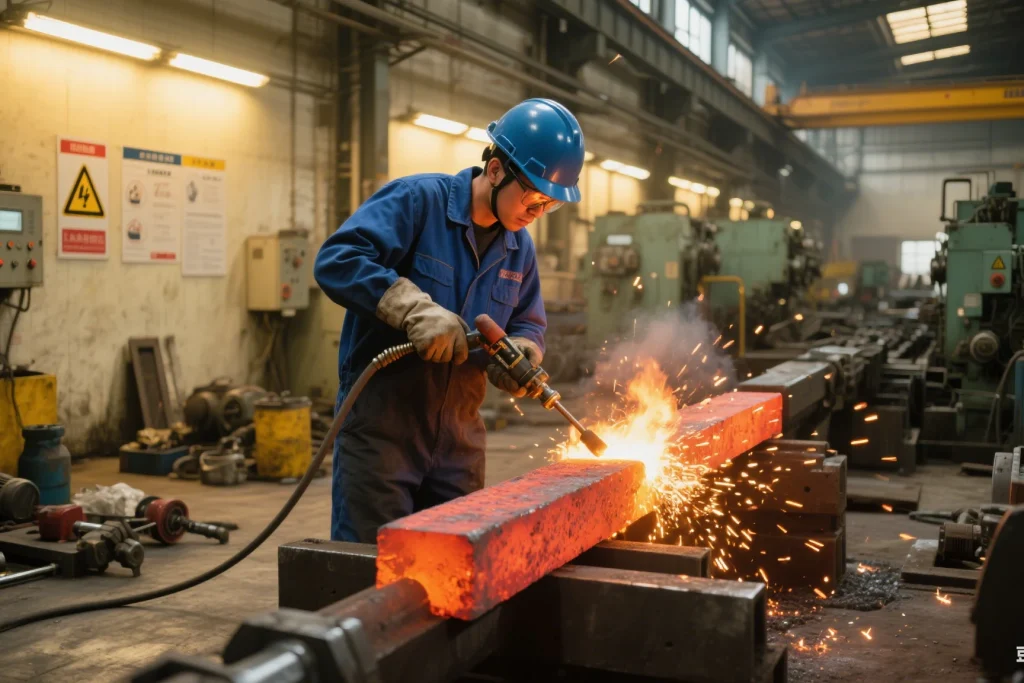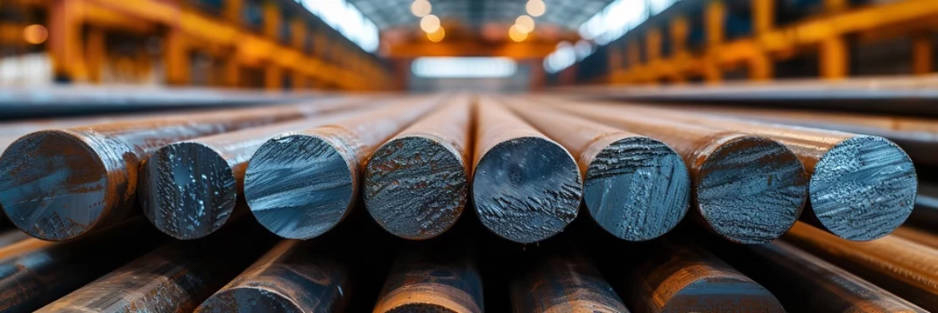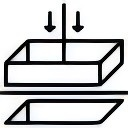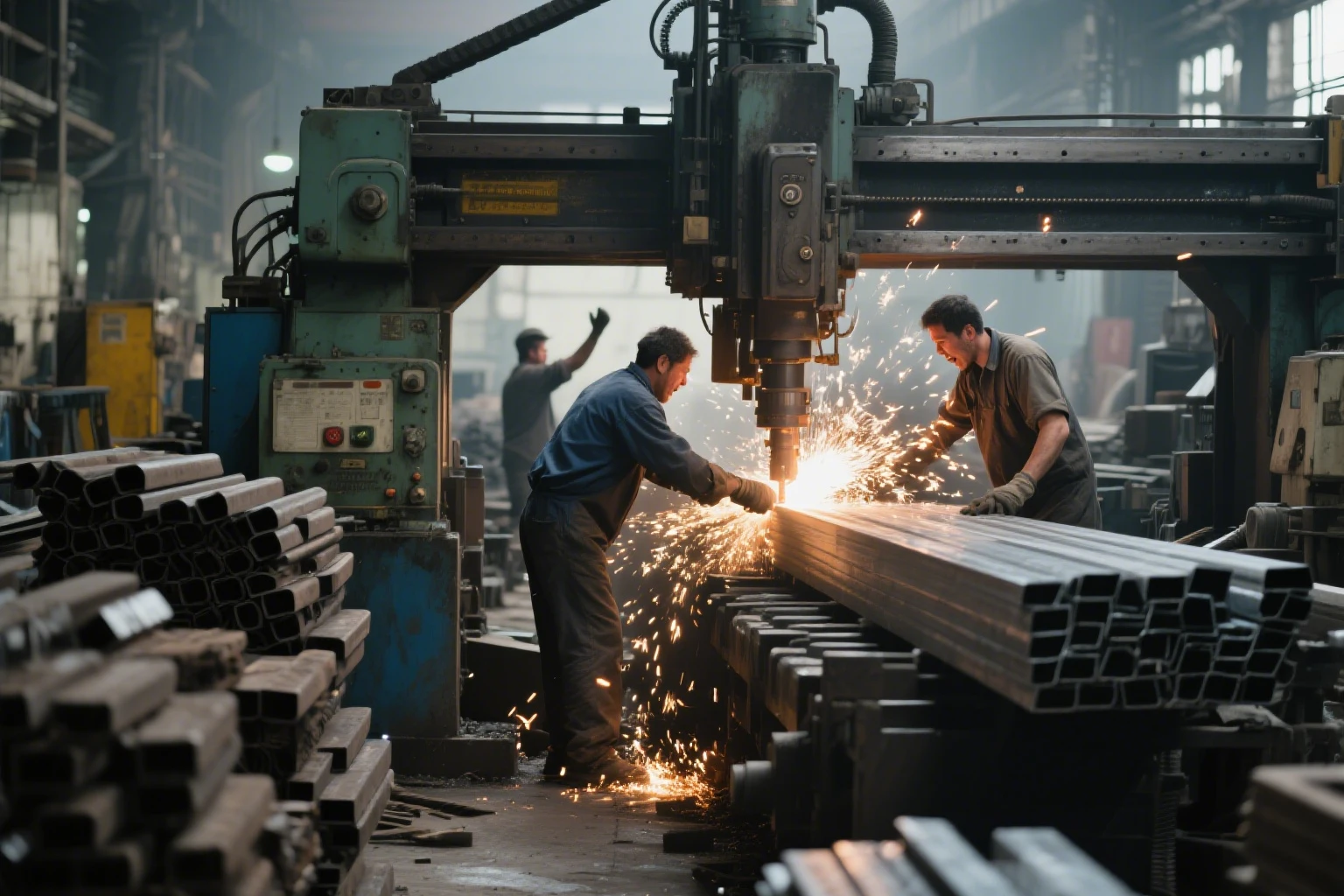
Abrasion-resistant steel is essential for demanding environments where components must withstand high stress and friction. It is commonly used in mining, construction, and heavy-duty equipment manufacturing. The quenching and tempering steps are key. They give the steel incredible strength. Plus, they make it super resistant to wear.
How is AR Steel Made?
Making abrasion-resistant steel takes some clever tricks to ensure it fights off wear well. Usually, it’s crafted in electric furnaces or special converters. While casting was once dominant, modern production increasingly favors forged and rolled AR steel for improved mechanical performance and formability. They work even better!
To give it those special qualities, the mix of ingredients in the steel is watched closely. Adding extra bits to the structure really helps it resist wear. Plus, they clean it up during the process. This keeps out junk and gases that could weaken it. Heating or treating the surface also boosts its ability to handle tough wear.
Quenching and Tempering Process: Key Steps
Overview of the Quenching and Tempering Process
Quenching and tempering are the big steps for abrasion-resistant steel. First, quenching cools hot steel fast. They use water or oil for this. The quick chill turns the steel’s insides into martensite. That’s a super hard but breakable form. It ramps up the strength a ton!
But martensite alone isn’t tough enough for real use. So, tempering comes next. Here, they warm the steel back up, but not too hot. This cuts down on the brittleness. It still keeps most of the strength from quenching. You end up with a great mix of hardness and durability for abrasion-resistant steel that can prolong material lifespan.
Why Quenching and Tempering Matter for Abrasion Resistance
Quenching makes abrasion-resistant steel super strong. It builds that martensite structure inside. This lets the steel handle heavy wear without bending or breaking. But without tempering, it’s too fragile. It might crack if hit hard or stressed.
Tempering fixes that. It adds flexibility while keeping enough strength to fight wear. It tweaks the steel to fit needs for things like mining gear or construction tools.
Take parts in tough spots, like excavator bucket teeth or crusher mantles. They need to handle impacts and resist wear. Quenching and tempering make sure these parts last a long time. Also, when welding ar plate—like AR500-grade plates for ballistic shields or heavy jobs—extra care is a must. The structure changes after heating. Good welding keeps it strong and working well.
By getting how abrasion-resistant steel comes to life through steps like these, folks in industry can use it smartly. It’s perfect for lasting fixes in harsh places.
The Quenching Process in Detail
The Science Behind Quenching
Heat Treatment and Rapid Cooling
Quenching is a big deal for treating abrasion-resistant steel. It’s all about boosting wear resistance. First, they heat the steel to a certain point. This changes its insides into austenite. Then, they cool it super fast with water, oil, or even air. The quick chill turns it into martensite. That’s the hard but brittle stuff that bumps up strength.
The speed of cooling is super important. It affects how strong and tough the steel gets. Water cools fast, for example. It’s great for jobs needing extra hardness. But cool too fast, and you risk stress or cracks.
Transformation of Microstructure During Quenching
The change inside during quenching is a game-changer. It locks carbon bits into the iron framework. That makes martensite. This form is crazy strong and awesome at resisting wear. It’s just right for tough tasks.
Still, martensite alone isn’t practical. It’s too easy to break. That’s why tempering steps in to balance things out.
Types of Cooling Media Used in Quenching
Water, Oil, and Air as Cooling Agents
The cooling method depends on what the steel needs to do.
- Water: It pulls heat out fast. People use it when they want max strength. But the quick chill can stress it and cause cracks.
- Oil: This cools slower than water. It lowers the chance of breaking while still getting good hardness. It’s a favorite for thick pieces or tricky shapes.
- Air: Air cools the slowest. It’s used for steels needing decent strength without losing toughness.
Each has good and bad sides. The pick depends on the job.
Challenges Associated with the Quenching Process
Quenching is great but tricky. Fast cooling can add stress inside. That might warp or crack the steel. Also, getting the same hardness all over big or odd-shaped parts is hard. Cooling speeds can differ.
You’ve got to control things like heat, time, and cooling type carefully. This keeps the quality steady and cuts down on problems.
The Tempering Process in Detail
Purpose of Tempering After Quenching
Balancing Hardness and Toughness
Tempering deals with the fragility from quenching. They reheat the steel, but not too much. This lets some carbon bits shift out of the martensite. It eases stress and keeps most of the strength.
You get a nice combo of hardness and toughness. That’s what makes abrasion-resistant steel special. It’s key for jobs needing wear resistance and the ability to take hits.
Steps Involved in the Tempering Process
- Controlled Heating to Achieve Desired Properties
In tempering, they carefully control heat and time. The steel gets warmed to 150°C to 700°C. This depends on its mix and what it’s for. Low heat keeps the strength high and boosts toughness a bit. Higher heat really improves toughness but dials back hardness.
- Adjustments Based on Specific Requirements
Tempering gets tailored to the task. For example:
- Parts taking big hits might get hotter tempering. This maxes out toughness.
- Pieces needing tons of wear resistance get lower heat. This keeps them super hard.
These changes make abrasion-resistant steel work great in all kinds of situations.
Factors Influencing the Effectiveness of Tempering
A few things affect how well tempering works:
- Steel Mix: Stuff like chromium or molybdenum helps it harden and changes how tempering goes.
- Starting Structure: The martensite from quenching sets the stage for tempering’s success.
- Heating Speed: Even heat avoids weird spots or warping.
- Cooling After Tempering: Slow cooling keeps the structure solid without new stress.
By handling these well and using good tricks like welding ar plate, industries get the best from abrasion-resistant steel. This includes AR500-grade plates for shields or heavy gear.
Figuring out how abrasion-resistant steel is made with steps like quenching and tempering shows why it’s a star. It shines in mining gear, construction tools, and more. By using these strong materials from Promispecial®—including the right ways for welding ar500 steel—folks can count on solid fixes. These hold up in the toughest spots and save money while performing great. At Promispecial®, our AR steel products—including AR500, NM400Tuf, and NM450HiTemp—are engineered with precision heat treatments to ensure consistent hardness, ductility, and superior service life under extreme wear conditions.
FAQ
Q: Why isn’t quenching enough on its own?
A: Quenching makes the steel super hard, but also pretty brittle. That means it could crack if hit hard or stressed. Tempering comes in to fix this by adding some flexibility, so the steel is both strong and tough enough for real use.
Q: How does tempering work?
A: Tempering heats the quenched steel again, but not too hot—usually between 150°C and 700°C. This eases the brittleness from quenching and keeps most of the hardness. You end up with abrasion resistant steel that’s tough and ready for heavy-duty tasks.
Q: What cooling methods are used in quenching?
A: They use water, oil, or air to cool the steel fast. Water cools the quickest and makes the steel super hard, but it can cause cracks. Oil cools slower and is gentler, good for tricky shapes. Air is the slowest and works for steel needing less hardness but more toughness.


























